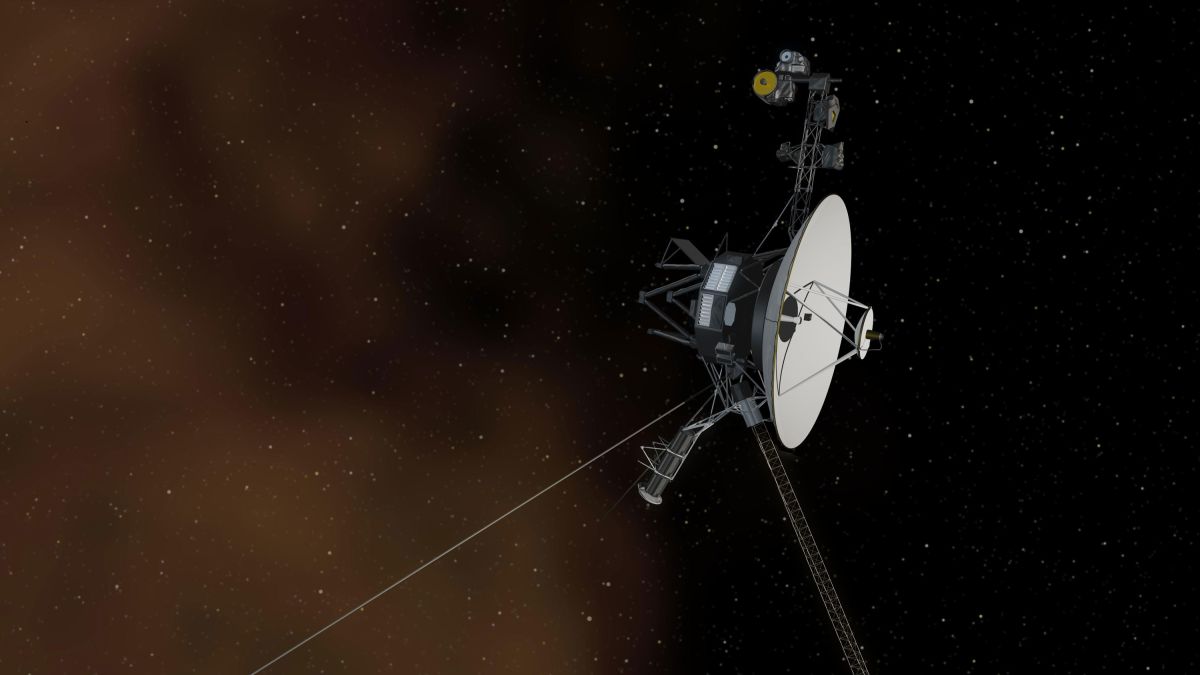(CNN) — NASA’s Voyager 1 space probe suffered a computer malfunction that cut off communications between the 46-year-old spacecraft and the mission team on Earth.
Engineers are trying to solve the problem while the old probe explores an unknown cosmic region along the far reaches of the solar system.
Voyager 1 is currently the farthest space probe from Earth, at about 24 billion kilometers, while its twin, Voyager 2, has moved more than 20 billion kilometers from our planet. Both are located in interstellar space, and are the only spacecraft operating outside the heliosphere, the Sun’s bubble of magnetic fields and particles that extends far beyond Pluto’s orbit.
Initially designed to last five years, the Voyager probes are the two longest-lived spacecraft in history. Their exceptionally long lifetimes mean that both spacecraft have provided additional information about our solar system and beyond after achieving their initial goals of flying around Jupiter, Saturn, Uranus and Neptune decades ago.
But their long, unexpected journeys were not without difficulties.
Voyager 1 has three computers on board, including a flight data system that collects information from the spacecraft’s science instruments and combines it with engineering data that reflects the spacecraft’s current state of health. Mission Control on Earth receives that data in the form of a binary code, or a string of ones and zeros.
However, it now appears that Voyager 1’s flight data system is stuck in auto-repeat mode, in a scenario reminiscent of the movie “Groundhog Day“.
Long distance failure
The mission team first discovered the problem on November 14, when the communications module in the flight data system began sending a repetitive pattern of ones and zeros, as if it was stuck in a loop.
Although the spacecraft is still able to receive and execute commands sent by the mission team, a problem with the communications module means no scientific or engineering data from Voyager 1 is sent back to Earth.
The Voyager team sent commands over the weekend for the spacecraft to restart its flight data system, but no usable data has been received yet, according to the agency. a pot.
NASA engineers are trying to gather more information about the root cause of the problem before determining the next steps to correct it, according to Kala Coffield, a media relations specialist at NASA’s Jet Propulsion Laboratory in Pasadena, California, which is managing the mission. The process may take weeks.
The last time Voyager 1 had a similar, but not identical, problem with its flight data system was in 1981, Coffield said, and the current problem does not appear to be related to other failures the spacecraft has experienced in recent years.
Because both Voyager probes undergo new tests, mission team members only have original evidence written from decades ago to refer to, and that evidence cannot answer the challenges the spacecraft faces as they age.
The Voyager team wants to consider all possible ramifications before sending further commands to the spacecraft to ensure its operations are not unexpectedly affected.
Voyager 1 is so far away that commands sent from Earth take 22.5 hours to reach the ship. In addition, the team must wait 45 hours to receive a response.
Keeping Voyager’s probes alive
While the ancient twin Voyager probes continue to explore the universe, The team was shut down little by little These “old people” tools to save energy and prolong their mission, He said previously Susan Dodd, Voyager project manager, told CNN.
Along the way, both spacecraft encounter unexpected problems and abandonments, including a A period of seven months In 2020 when Voyager 2 was unable to communicate with Earth. In August, the expedition team used “Scream” technique. To restore communications with Voyager 2 after a command inadvertently pointed the spacecraft’s antenna in the wrong direction.
Coffield explained that although the team hopes to restore the regular flow of data sent by Voyager 1, the main value of the mission lies in its long duration. For example, scientists want to see how particles and magnetic fields change as the probes move away from the heliosphere. But this data set would be incomplete if Voyager 1 couldn’t return information as it went.
The mission team has been creative in its strategies to expand the power supplies of both spacecraft in recent years to allow them to continue their record-breaking missions.
“Travelers operate outside of their primary missions for longer than any other spacecraft in history,” Coffield said. “So, while the engineering team is working hard to keep them alive, we also expect problems to arise.”

“Proud web fanatic. Subtly charming twitter geek. Reader. Internet trailblazer. Music buff.”

:quality(85)/cloudfront-us-east-1.images.arcpublishing.com/infobae/TEQF6EONZRFGLLLDIDD4L2O4EE.jpg)

:quality(75)/cloudfront-us-east-1.images.arcpublishing.com/elcomercio/XU32LRAEZFDDPNVHLFU3CKVBYY.jpg)



More Stories
How to create 3D videos with my iPhone, it will be very useful even for your business
NASA discovers an anomaly in the Earth’s magnetic field that could have serious consequences for humans
Can the Earth be divided into two parts?